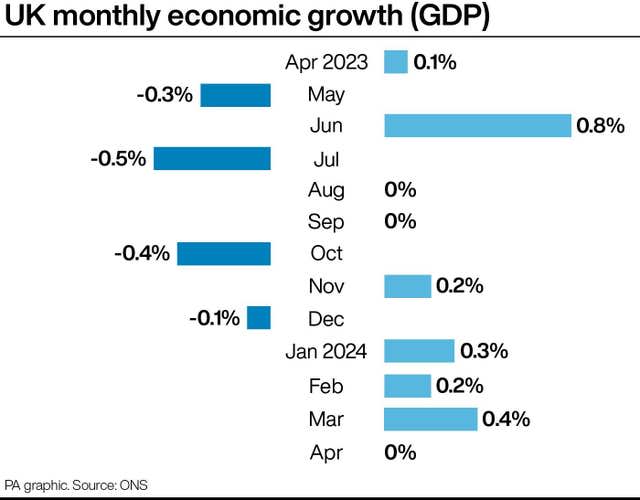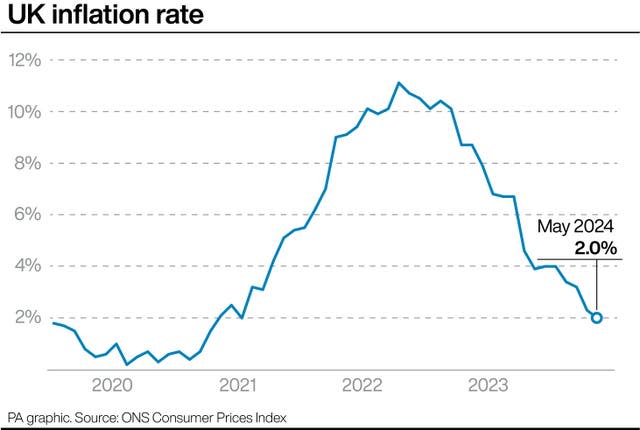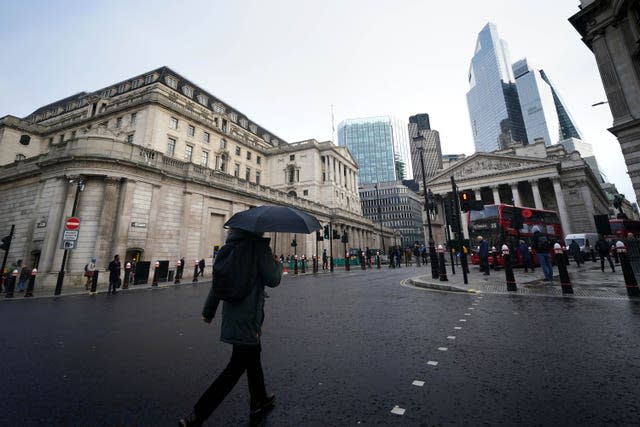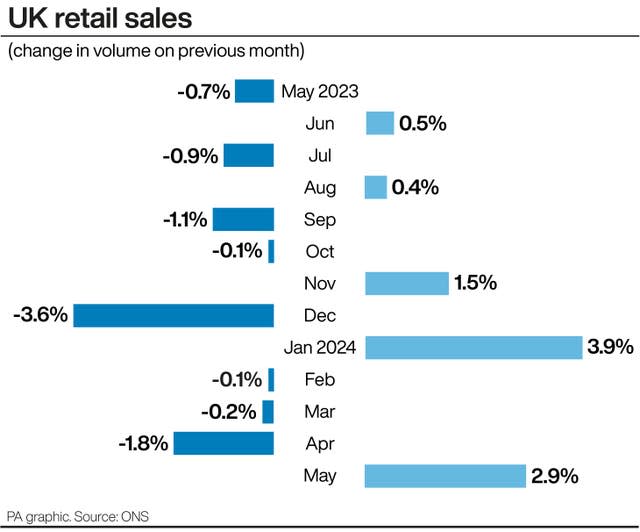What is the state of the UK economy as the election looms?
Official data has revealed higher Government debt levels and increased retail sales amid a focus on the UK economy in the run up to the General Election.
On Friday, the Office for National Statistics (ONS) delivered its final monthly updates for key economic measures before polling day on July 4.
Labour and the Conservatives have vowed to strengthen the UK’s finances in the coming years.

Here, the PA news agency looks at the current state of the economy and the challenges facing the next government:
– Economic growth
The UK economy has recorded an improvement since the start of the year but saw no growth in April in the face of wet weather, the ONS said earlier this month.
The stagnation, which was largely in line with economist projections, came after a 0.4% increase in March.
March’s growth contributed a 0.6% increase in UK gross domestic product (GDP) over the first quarter of the year, although the ONS will reveal its confirmed data for the quarter next Friday.
Strength in the retail, transport and haulage sectors all helped drive recent growth, although there was some weakness in the construction industry.
The Prime Minister and Chancellor cheered the quarterly increase, which came after the UK had fallen into a narrow recession during the back half of 2023.
Continued economic growth will be important for the next government, with both Labour and the Conservatives factoring in improved economic growth to help fund some spending commitments.
– Inflation
Inflation is the term used to describe the rising price of goods and services.
The rate of inflation slowed to 2% in May, dropping to its lowest level since July 2021, according to official data released earlier this week.

It matched the Bank of England’s target rate for inflation, which is set by the Government.
The reading showed prices are still increasing but at a significantly slower rate, having slowed from a peak of 11.1% in late 2022 after it had been driven higher by a surge in energy prices following the Russian invasion of Ukraine.
The Bank of England said on Thursday that inflation is expected to tick slightly higher again in the coming months but will stabilise near to the target rate.
– Interest rates
The base interest rate – which dictates how much the Bank of England charges commercial banks to borrow money and therefore influences what they charge customers – is currently at a 16-year-high of 5.25%.
Interest rates had been at historically low levels in the UK following the aftermath of the 2008 financial crisis but were increased sharply by the central bank over the past two years.
These were increased in response to rampant inflation, with the intent to hamper spending demand by making it more expensive to borrow money.
However, it means millions of UK households have witnessed, or will witness, increases in their mortgage bills and thus increases in rental costs.
On Thursday, the Bank of England held rates for the seventh consecutive meeting but stressed it was “finely balanced”, with many economists now predicting they will be reduced at the next vote in August after the slowdown in inflation.

– State finances
ONS data released on Friday revealed UK state debt increased to its highest level, in proportion to the overall economy, since 1961.
Public sector net debt as a proportion to UK GDP hit 99.8% for the month.
Higher borrowing costs have put pressure on Treasury coffers, which have also been impacted by increases to benefit payments and public sector wages.
It came despite Prime Minister Rishi Sunak promising to reduce debt as one of his five pledges at the start of 2023.
Nevertheless, the Government borrowed less than predicted by the official forecaster in May, at £15 billion, and has undershot guidance by a total of £3.3 billion over the first two months of the financial year, providing more wiggle room than expected for the next government.
However, economists have cautioned that keeping departmental budgets stable will ultimately cost more over the coming years due to high borrowing costs and labour inflation, providing a challenge for the next government when balancing the books.
– Consumer spending
Consumer spending has been broadly robust over the past two years despite rampant inflation, with some volatility between months.
Friday’s ONS data showed there was a 2.9% increase in the volume of products purchased by UK shoppers in May.

This offset a sales slump in April, when wet weather had stopped many heading to the high street.
Elsewhere, GfK’s long-running Consumer Confidence Index recorded its third consecutive increase since March last month, as surveyed Britons highlighted improved optimism about the economy in the face of slower inflation.
– Labour market
Britain’s unemployment rate unexpectedly rose to its highest rate for more than two years, in the latest official figures released last week.
The ONS said the rate of UK unemployment lifted to 4.4% in the three months to April, up from 4.3% in the three months to March.
Vacancies also dropped sharply once again, down 12,000 to 904,000 in the three months to May, increasing concerns about weakness in the jobs market.
But the figures showed regular earnings growth remained unchanged at 6% in the three months to April and continued to outstrip price rises.

 Yahoo News
Yahoo News 
